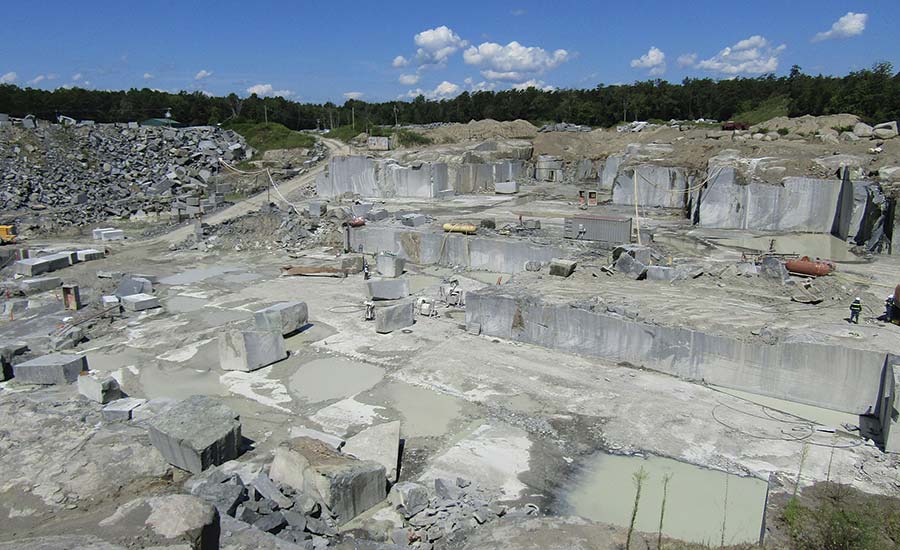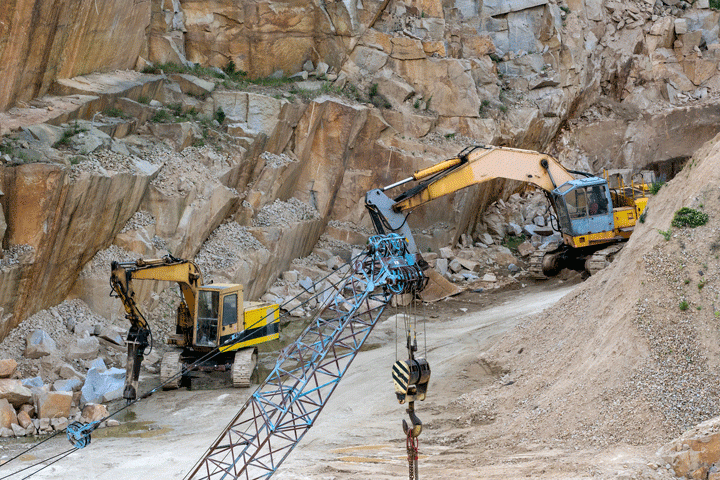Uncovering the Elegance of Granite Quarry in South Africa Marvels
Uncovering the Elegance of Granite Quarry in South Africa Marvels
Blog Article
Unleashing the Beauty and Sturdiness of Granite Quarry: A Trip With Time
Granite quarries stand as testaments to both the geological marvels of our world and the enduring workmanship of humankind. As we peel back the layers of time and dive right into the elaborate globe of granite quarrying, we discover a story that not just showcases the appeal and sturdiness of this magnificent rock however likewise sheds light on the extensive impact it has actually had on people past and existing.

The Beginnings of Granite Quarrying
In the annals of history, the origins of granite quarrying can be mapped back to old human beings where the quest for long lasting structure products sustained the emergence of this ageless craft. From the marvelous frameworks of old Egypt to the grandiose temples of Greece, granite has been respected for its toughness, elegance, and long life. The Egyptians, with their advanced quarrying techniques, were among the first to draw out granite widespread, using it to build significant pyramids and detailed statuaries that have actually held up against the examination of time.
As civilizations evolved, so did the methods of quarrying granite. The Romans further refined the techniques, developing tools and machinery to extract and transportation granite over substantial ranges for their building jobs. The toughness and visual charm of granite made it a valued material for sanctuaries, monuments, and sculptures throughout the ages.
Today, the heritage of old quarrying techniques resides on, with contemporary technology enhancing efficiency while still admiring the workmanship of our ancestors. The origins of granite quarrying act as a testimony to human ingenuity and the enduring attraction of this honorable stone.
Tools and Strategies of Quarrying
Checking out the meticulous workmanship of granite quarrying unveils an innovative variety of tools and methods meticulously sharpened over centuries. Quarrying granite needs customized devices to remove the stone from the earth effectively and with precision. Modern quarries make use of diamond-wire saws, high-powered drills, and dynamites to break apart the granite in a regulated fashion. These devices enable the extraction of huge blocks of granite while lessening waste and ecological effect.
In addition to innovative machinery, standard hand devices are still used in specific quarrying procedures to ensure delicate accuracy in removing the stone. Chisels, hammers, and wedges are utilized by knowledgeable quarry workers to different granite obstructs along natural fractures, a method that has actually been given through generations.
Additionally, strategies such as piercing vertical and straight openings for putting plumes and wedges, as well as the controlled use of dynamites in critical areas, enable quarry workers to extract granite efficiently while protecting the integrity of the stone. The harmony between contemporary technology and typical craftsmanship is essential to the sustainable quarrying of granite for generations to find.
Advancement of Granite Quarries
The makeover of granite quarries gradually discloses a fascinating narrative of technological innovation and market evolution. From ancient times where hands-on devices like blades and hammers were utilized to draw out granite blocks, to the industrial change introducing steam-powered machinery for faster quarrying, the evolution of granite quarries has actually been marked by considerable innovations. In recent click site decades, the learn this here now development of diamond wire saws and progressed drilling technologies has actually transformed the removal process, enabling more precise cuts and decreased wastage of basic material.

Granite Quarrying in Modern Times
The progression of granite quarrying strategies from historical reliance on handbook tools to the sophisticated approaches of contemporary times emphasizes a remarkable trip of technological technology and sustainability techniques within the industry. In modern granite quarrying, advanced machinery such as ruby cable saws, high-capacity excavators, and digital boring devices have actually reinvented the removal process. These devices improve performance, precision, and safety, enabling for larger amounts of granite to be drawn out in a much shorter timeframe compared to conventional approaches.
Furthermore, contemporary quarrying practices prioritize sustainability and ecological stewardship - granite quarries in south africa. Firms are significantly embracing green techniques like water reusing systems, dust reductions technologies, and rehab prepare for worn down quarries. These efforts intend to minimize the ecological effect of granite removal, preserve natural deposits, and recover quarried landscapes to their original state
In addition, the integration of electronic innovations like drones, GPS tracking, and 3D modeling has actually made it possible for quarry operators to maximize operations, improve decision-making, and make certain the sustainable management of resources. By welcoming technology and sustainability, the granite quarrying industry in contemporary times proceeds to thrive while upholding ecological obligation.

Maintaining and Shielding Granite Quarries
Among the evolving landscape of granite quarrying techniques, conservation and security of these important natural sites have ended up being critical issues for sector stakeholders and environmental supporters alike. As granite quarries continue to be an important resource of this sought after rock, it is vital to embrace lasting techniques that guarantee their longevity and safeguard surrounding communities.
Protecting granite quarries entails implementing effective improvement strategies to bring back the land post-extraction. granite quarries in south africa. This process includes reshaping the terrain, replanting native plants, and get more developing environments for wild animals to thrive. By bring back quarries to their natural state, the ecological effect can be lessened, and the elegance of these landscapes can sustain for future generations to value
Additionally, securing granite quarries calls for applying laws that control responsible quarrying techniques. This consists of monitoring water top quality, managing dirt discharges, and managing sound levels to minimize disturbances to the setting and close-by areas. Collective initiatives between sector players, governmental bodies, and preservation groups are critical in maintaining these standards and making sure the sustainable use granite quarries.
Verdict
In final thought, the trip through time in granite quarrying discloses the origins, tools, strategies, and evolution of this method. The modern-day age has actually brought advancements in quarrying methods, making it possible for the preservation and security of these beneficial natural deposits. It is essential to remain to maintain lasting practices to make sure the elegance and resilience of granite quarries for future generations to value.
Report this page